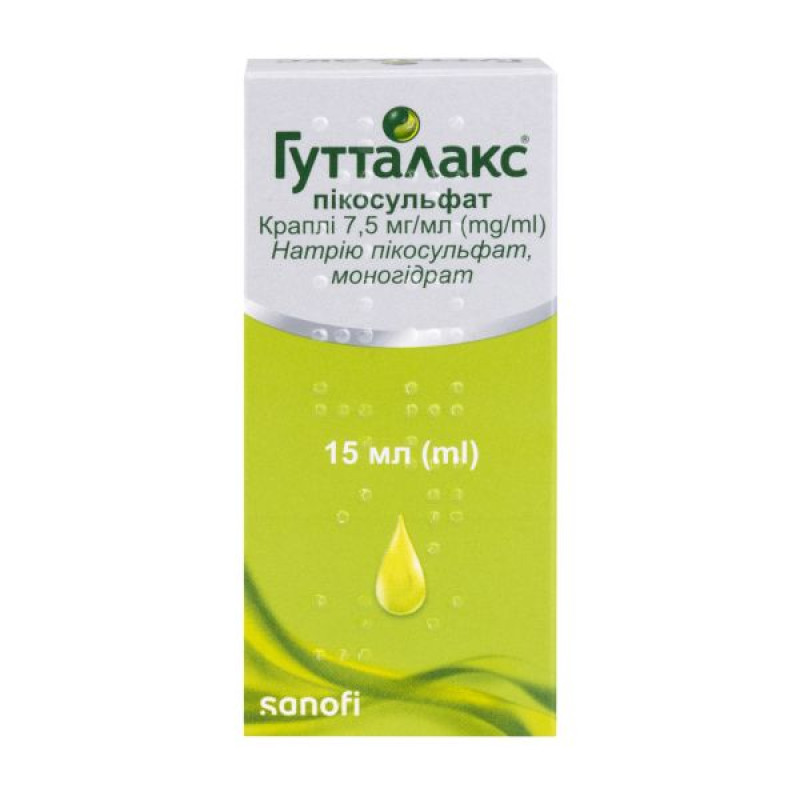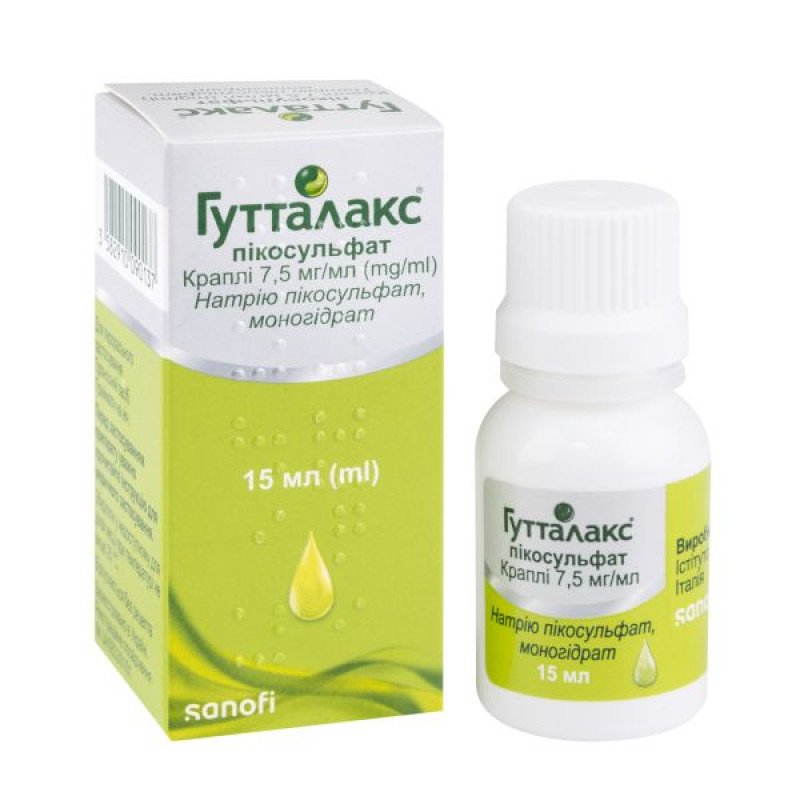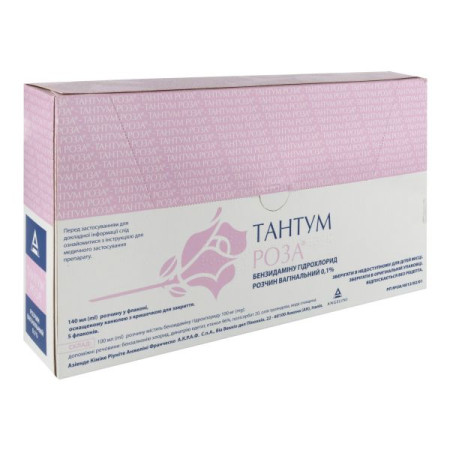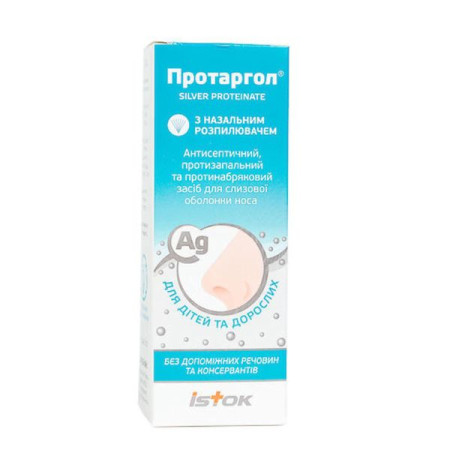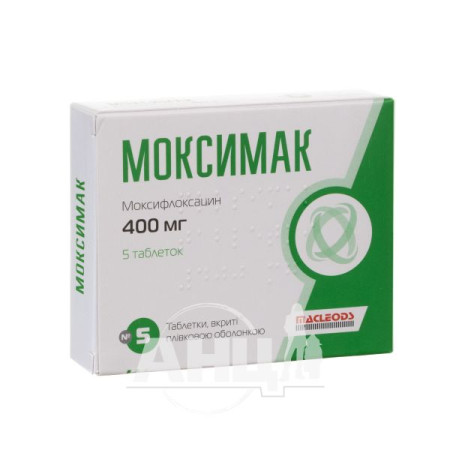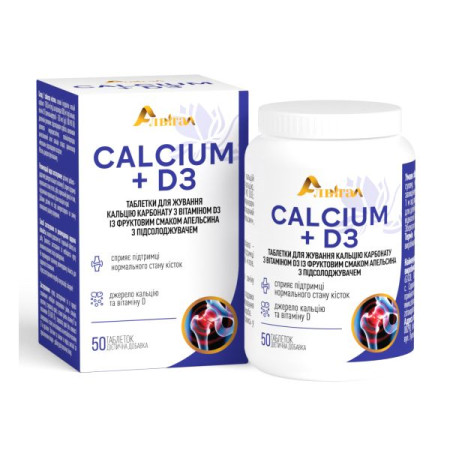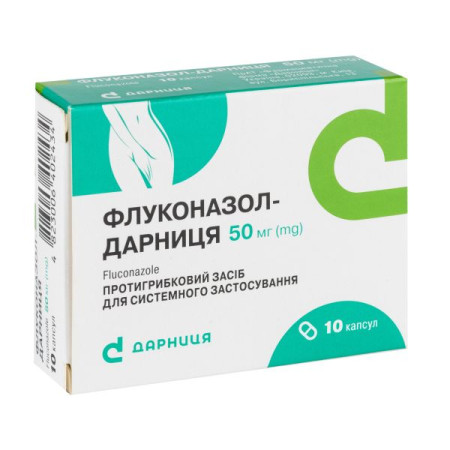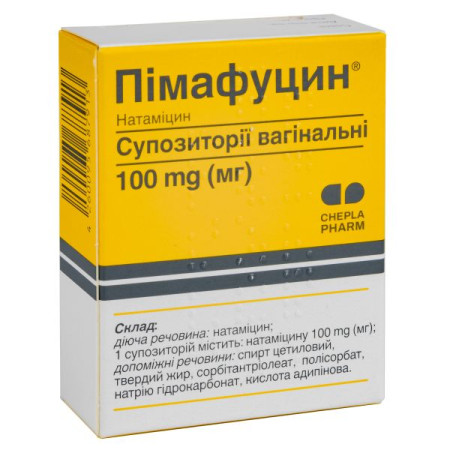Guttalax picosulfate drops bottle 15 ml
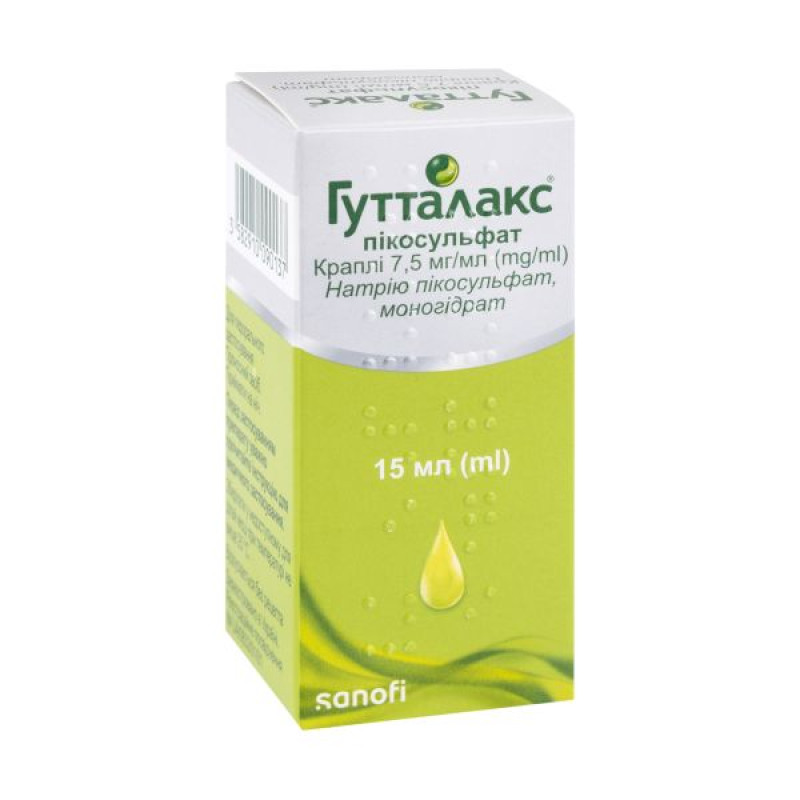
Instructions for Guttalax picosulfate drops, bottle 15 ml
Composition
active ingredient: sodium picosulfate, monohydrate;
1 ml contains sodium picosulfate monohydrate 7.5 mg;
excipients: sodium benzoate (E 211); sorbitol solution, non-crystallizing (E 420); citric acid, monohydrate; sodium citrate, dihydrate; purified water.
Dosage form
Drops.
Main physicochemical properties: transparent solution, colorless to yellowish or slightly yellowish-brown, somewhat viscous solution with an almost imperceptible odor.
Pharmacotherapeutic group
Contact laxatives. ATX code A06A B08.
Pharmacological properties
Pharmacodynamics
Sodium picosulfate, the active ingredient of GUTTALAX PICOSULFATE, is a local laxative of the triarylmethane group, which, after bacterial digestion in the colon, stimulates its mucosa, accelerating peristalsis and promoting the accumulation of water and electrolytes in the lumen of the colon. The result is stimulation of defecation, reduction of transit time and softening of feces.
Sodium picosulfate acts in the colon and directly stimulates the evacuation of feces there. Therefore, it is ineffective in affecting the digestion or absorption of calories or essential nutrients in the small intestine.
In a randomized, double-blind, parallel-group study in 367 patients with chronic constipation, daily use of GUTTALAX PICOSULFATE resulted in a significant increase in the number of successful bowel movements per week compared to placebo, starting from the first week of treatment. The benefits of GUTTALAX PICOSULFATE compared to placebo were demonstrated throughout the 4 weeks of treatment (p < 0.0001). At the end of the study, serum potassium levels remained unchanged (4.4 mM) and within the physiological range (3.6 - 5.3 mM).
Pharmacokinetics
Absorption and distribution: After oral administration, sodium picosulfate reaches the colon without significant absorption.
Biotransformation: Sodium picosulfate is converted to the active compound with laxative effect, bis-(p-hydroxyphenyl)-pyridyl-2-methane (BHPM), by bacterial cleavage in the distal intestine.
Elimination: After conversion, only a small portion of BHPM is absorbed. After oral administration of 10 mg sodium picosulfate, 10.4% of the total dose is excreted as BHPM glucuronide in the urine after 48 hours. In addition, BHPM is excreted as a glucuronide in the bile.
Relationship between pharmacokinetics and pharmacodynamics. The onset of action is usually observed 6-12 hours after taking the drug, depending on the release of the active metabolite (BGPM). The laxative effect of the drug does not correlate with the levels of the active metabolite in the blood plasma.
Indication
Constipation or cases requiring easier defecation.
As with other laxatives, GUTTALAX PICOSULFATE should not be used daily or for prolonged periods of time without a complete diagnostic evaluation to determine the cause of constipation.
Contraindication
Hypersensitivity to the active substance, other triarylmethanes or to any of the excipients of the drug.
Dynamic or mechanical intestinal obstruction.
Severe diseases of the abdominal organs with pain and/or fever (e.g. appendicitis), which may be accompanied by nausea and vomiting.
Acute inflammatory bowel diseases.
Severe dehydration.
Rare hereditary intolerance to any of the excipients of the drug (see section "Special warnings and precautions for use").
The drug GUTTALAX PICOSULFATE should not be prescribed to children under 4 years of age.
The drug GUTTALAX PICOSULFATE should not be used in patients with rare hereditary fructose intolerance.
In conditions associated with impaired water and electrolyte balance (e.g. severe renal impairment), GUTTALAX PICOSULFATE should be taken only under medical supervision.
Interaction with other medicinal products and other types of interactions
Concomitant use of high doses of GUTTALAX PICOSULFATE and diuretics or corticosteroids may increase the risk of electrolyte imbalance, which may lead to increased sensitivity to cardiac glycosides.
Concomitant use with antibiotics may weaken the laxative effect of the drug GUTTALAX PICOSULFATE.
Application features
Patients suffering from chronic constipation should undergo a complete diagnostic evaluation and determine the cause of the constipation.
Cases of dizziness and/or syncope have been reported to occur in association with the use of sodium picosulfate. Available information suggests that these events were due to syncope during defecation (associated with the Valsalva maneuver) or a vasovagal response to abdominal pain.
This medicinal product contains approximately 450 mg of sorbitol per 1 ml of solution (corresponding to approximately 600 mg of sorbitol at the maximum recommended daily dose for adults). Patients with rare hereditary problems of fructose intolerance should not take GUTTALAX PICOSULFATE.
Ability to influence reaction speed when driving vehicles or other mechanisms
No studies have been conducted on the effect of the drug on the ability to drive vehicles and operate other mechanisms.
However, patients should be warned about the possibility of developing adverse events such as dizziness and/or syncope due to a vasovagal reaction (e.g. in response to abdominal cramps). If abdominal cramps occur, patients should avoid potentially hazardous activities such as driving or operating machinery.
Use during pregnancy or breastfeeding
Pregnancy
Adequate clinical studies in pregnant women have not been conducted. Animal studies have shown reproductive toxicity at daily doses of 10 mg/kg and above. For safety reasons, GUTTALAX PICOSULFATE should, if possible, not be used during pregnancy.
Breast-feeding
Clinical data show that neither the active metabolite bis-(parahydroxyphenyl)-pyridyl-2-methane (BHPM) nor its glucuronides are excreted in breast milk. Therefore, GUTTALAX PICOSULFATE can be used during breastfeeding.
Fertility
Clinical studies on the effect of the drug on fertility in humans have not been conducted. Animal studies have not demonstrated any effect of the drug on fertility.
Method of administration and doses
Dosage. Unless otherwise prescribed, the dose for adults is 10 - 18 drops (corresponding to 5 - 10 mg of sodium picosulfate). The dose for children aged 4 years and over is 5 - 9 drops (corresponding to 2.5 - 5 mg of sodium picosulfate).
It is recommended to start with the lowest dose. The dose can be adjusted up to the maximum recommended dose to ensure regular bowel movements. The maximum daily dose should not be exceeded, which is 18 drops for adults or 9 drops for children aged 4 years and over.
GUTTALAX PICOSULFATE should not be used continuously (daily) or for long periods of time without determining the cause of constipation.
Method of administration. Oral administration. It is advisable to take GUTTALAX PICOSULFATE in the evening. The drug can be taken with or without liquid. After using the drops, bowel movements usually occur approximately 10 - 12 hours later.
Children
The drug is used in children aged 4 years and older only as prescribed by a doctor.
Overdose
Overdose may result in loose stools (diarrhea), abdominal cramps, and clinically significant loss of fluid, potassium, and other electrolytes.
In acute overdose, the effects may be minimized or eliminated by inducing vomiting or gastric lavage shortly after ingestion. Fluid replacement and correction of electrolyte balance may be considered. Antispasmodics may be used.
Isolated cases of colonic mucosal ischemia have been reported with sodium picosulfate doses significantly higher than those recommended for the treatment of constipation.
Chronic overdose of GUTTALAX PICOSULFATE (as with other laxatives) may result in chronic diarrhea, abdominal pain, hypokalemia, secondary hyperaldosteronism, and kidney stone formation. Renal tubular damage, metabolic alkalosis, and muscle weakness resulting from hypokalemia have been reported with prolonged laxative abuse.
Adverse reactions
Adverse reactions are listed by frequency of occurrence: very common (≥ 1/10), common (≥ 1/100 - < 1/10), uncommon (≥ 1/1000 - < 1/100), rare (≥ 1/10,000 - < 1/1000), very rare (< 1/10,000), frequency unknown (frequency cannot be estimated from the available data).
Skin and subcutaneous tissue disorders:
frequency unknown: skin reactions (angioedema, drug toxicoderma, rash, itching).
On the part of the immune system:
frequency unknown: allergic reactions.
From the nervous system:
Uncommon: dizziness; frequency unknown: syncope.
Available information suggests that dizziness and syncope are due to a vasovagal reaction (e.g. in response to abdominal cramps or defecation) (see also section "Special warnings and precautions for use").
From the gastrointestinal tract:
very common: diarrhea; common: abdominal discomfort, abdominal pain, abdominal cramps; uncommon: nausea, vomiting.
Reporting of suspected adverse reactions.
Reporting suspected adverse reactions after the approval of a medicinal product is an important procedure. This allows for continued monitoring of the benefit/risk balance of a given medicinal product. Healthcare professionals are asked to report all suspected adverse reactions to the State Expert Center of the Ministry of Health of Ukraine.
Expiration date
3 years. Use within 12 months after first opening the bottle.
Storage conditions
Store out of the reach of children at a temperature not exceeding 25 °C.
Packaging
15 ml in a bottle, 1 bottle in a cardboard box.
Vacation category
Without a prescription.
Producer
Istituto de Angeli S.r.l., Italy.
Location of the manufacturer and its business address
Localita Prulli 103/s - 50066 Regello (Florence), Italy.
There are no reviews for this product.
There are no reviews for this product, be the first to leave your review.
No questions about this product, be the first and ask your question.







